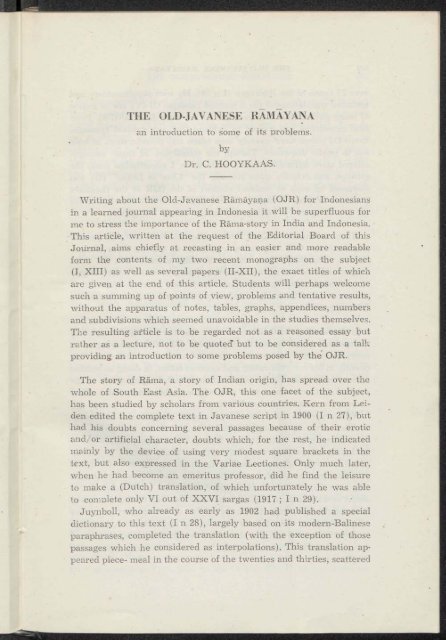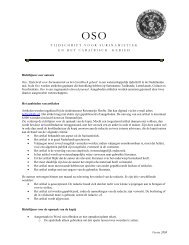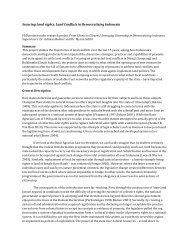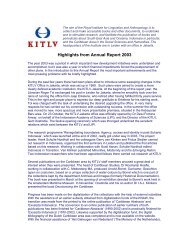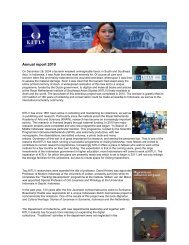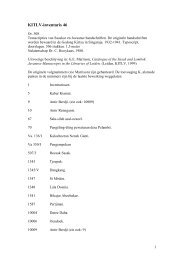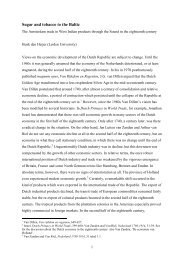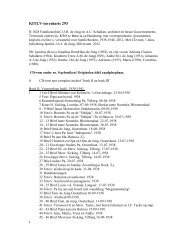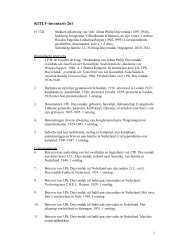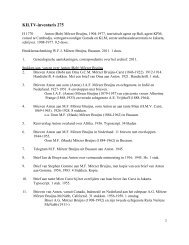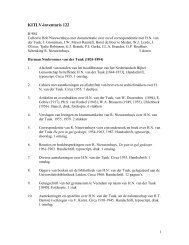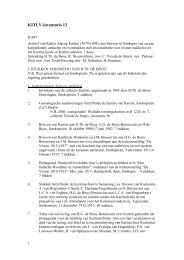ILMU BAHASA, ILMU BUMI KEBUDAJAAN INDONESIA - kitlv
ILMU BAHASA, ILMU BUMI KEBUDAJAAN INDONESIA - kitlv
ILMU BAHASA, ILMU BUMI KEBUDAJAAN INDONESIA - kitlv
Create successful ePaper yourself
Turn your PDF publications into a flip-book with our unique Google optimized e-Paper software.
THE OLD-JAVANESE K AM A Y AN A<br />
an introduction to some of its problems.<br />
by<br />
Dr. C. HOOYKAAS.<br />
Writing about the Old-Javanese Rämäyana (OJR) for Indonesians<br />
in a learned journal appearing in Indonesia it will be superfluous for<br />
me to stress the importance of the Räma-story in India and Indonesia.<br />
This article, written at the request of the Editorial Board of this<br />
Journal, aims chiefly at recasting in an easier and more readable<br />
form the contents of my two recent monographs on the subject<br />
(I, XIII) as well as several papers (II-XII), the exact titles of which<br />
are given at the end of this article. Students will perhaps welcome<br />
such a summing up of points of view, problems and tentative results,<br />
without the apparatus of notes, tables, graphs, appendices, numbers<br />
and subdivisions which seemed unavoidable in the studies themselves.<br />
The resulting article is to be regarded not as a reasoned essay but<br />
rather as a lecture, not to be quoted but to be considered as a talk<br />
providing an introduction to some problems posed by the OJR.<br />
The story of Räma, a story of Indian origin, has spread over the<br />
whole of South East Asia. The OJR, this one facet of the subject,<br />
has been studied by scholars from various countries. Kern from Leiden<br />
edited the complete text in Javanese script in 1900 (I n 27), but<br />
had his doubts concerning several passages because of their erotic<br />
and/or artificial character, doubts which, for the rest, he indicated<br />
mainly by the device of using very modest square brackets in the<br />
text, but also expressed in the Variae Lectiones. Only much later,<br />
when he had become an emeritus professor, did he find the leisure<br />
to make a (Dutch) translation, of which unfortunately he was able<br />
to complete only VI out of XXVI sar gas (1917 ; I n 29).<br />
Juynboll, who already as early as 1902 had published a special<br />
dictionary to this text (I n 28), largely based on its modern-Balinese<br />
paraphrases, completed the translation (with the exception of those<br />
passages which he considered as interpolations). This translation appeared<br />
piece- meal in the course of the twenties and thirties, scattered


